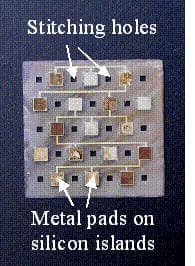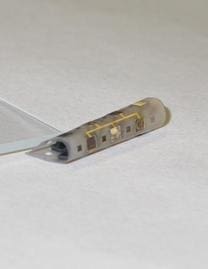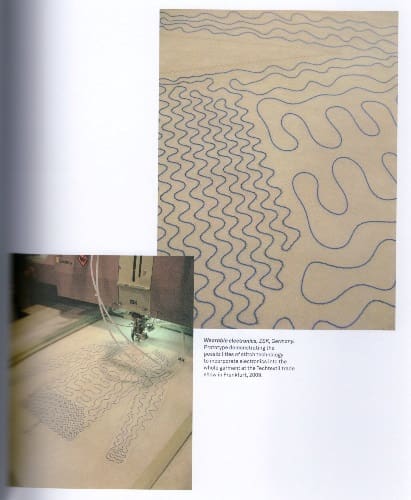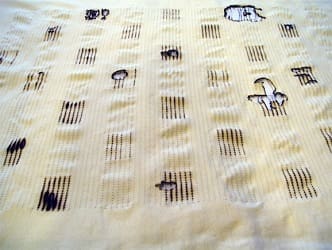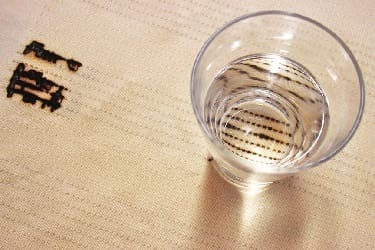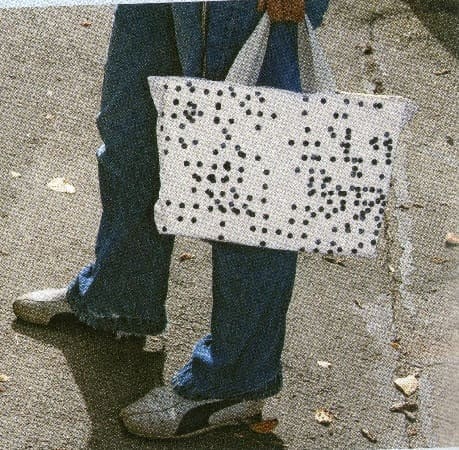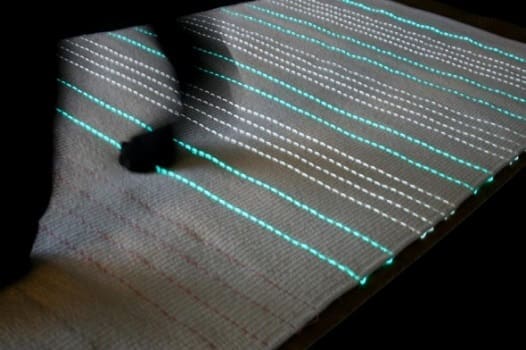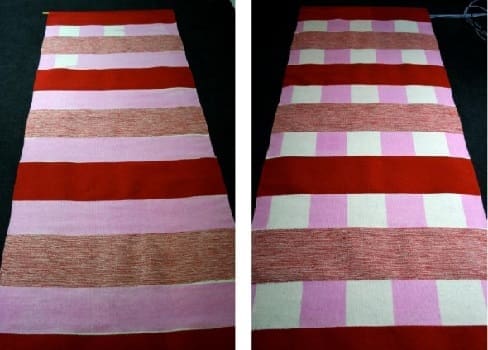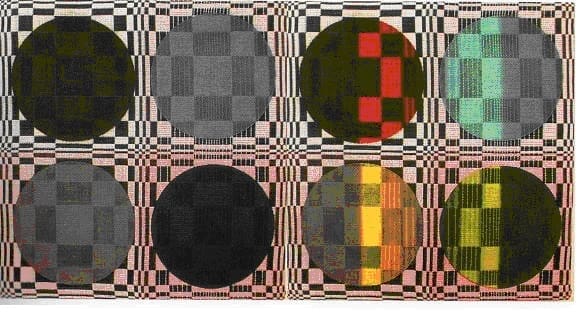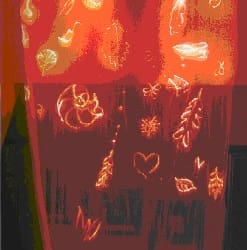We wrap up are 3 part series where we had started from new age fibre/yarn to fabric and now conclude with garments.
The beginning of the 21st century has witnessed an exceptional period of change and innovation in the science, design and art of textiles. These innovations involve materials and prototypes that are so new that we can hardly foresee how the familiar functions of textiles will be transformed in the future: fabrics that can harvest solar energy and emit light or heat, interactive digital textile displays, fabrics that are touch-sensitive, primed to detect a faltering pulse or environmental pollutants, fabric buildings and fabric armour that can change colour, or flex textile muscles, all show how textiles are being fundamentally reinvented for predicted demands in the century ahead of us.
Working of the Fabric Computer
Intelligent textiles, variously known as smart fabrics, electronic textiles, or e-textiles, have attracted considerable attentions worldwide due to their potential to bring revolutionary impacts on human life. These textiles integrate conductive elements, often yarns or fibres into the textile. They are products that in some senses of the word are “active” themselves when used. They can be used in anything from curtains that sense the sun and change structure to clothes that adapt their function to extreme environments. Despite many promising progresses in this exciting newly emerged research field, there still exist a number of important obstacles. One of the most challenging issues is the conflict between the flexibility of the textiles and the need to incorporate sensing and computation modules. To address this critical issue, an innovative intelligent textile technology is proposed. The central hypothesis is that practical intelligent textiles can be realized by integrating fabrics with flexible transducers/ electronics that are made using a unique, ‘flexible-skin’ technology.
The unique features of the silicon-based flexible skins are extremely desirable for intelligent textiles. A novel approach of making intelligent textiles by integrating the silicon-based flexible skins with textiles is proposed. The most important advantage of this novel technology is its compatibility with current MEMS (micro-machined transducers) and IC (integrated circuit) technologies, since MEMS devices and ICs can be fabricated on the silicon wafer before the formation of the skin. This not only saves significant R&D efforts by avoiding re-invention, but also enables the integration of abundant sensing and computational capabilities offered by the silicon-based technology.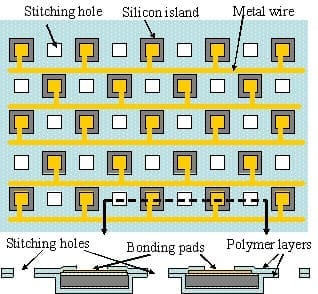
Figure 1. Top and cross section views of the proposed flexible skin to be woven into textiles.
In order to be integrated with textiles, the original flexible skins are modified and a new perforated structure is proposed as schematically shown in Fig. 1. The new flexible skin consists of 4 components: (1) silicon islands that host sensors, electronics, and bonding pads; (2) metal interconnect wires between silicon islands; (3) polymer layers that sandwich silicon islands and metal wires; and (4) stitching holes etched through polymer layers, which allow the direct sewing into fabrics. One of the fabricated silicon flexible skins is shown in Fig. 2 (a). It can be easily twisted and bent without breaking the interconnect traces and silicon islands as shown in Fig 2 (b)
(A) (B)
Fig 2. (a) A silicon flexible skin with stitching holes; (b) a folded silicon flexible skin.
The flexible transducers/circuits made by the proposed method can be directly embroidered into textiles. It is worth noting that the stitching methods and patterns have substantial impact on the mechanical properties and robustness of the assembled fabrics. Numerous stitching patterns and methods, which have already been developed in the textile industry, will be an excellent resource to exploit. The following picture shows one skin stitched onto the surface of textiles using conductive yarns. The electrical contact was made by conductive epoxy.
Fig 3. A silicon flexible skin stitched onto the surface of a piece of KEVLARÒ fabric.
Applications of Fabric Computer
There are several companies and trademarks offering products which are smart. But all textiles have the same basic properties: Lightweight, durable, flexible, cost competitive with ability to be crimped, soldered and subjected to textile processing. Let’s take a look at few…
Weave: Woven fabrics, whether flat or three-dimensional, display great versatility. Their strength allows textiles to be used on vastly different scales. The incorporation of conductive yarns into woven fabrics is an area of continued refinement. Bayer Material Science AG is combining CNT (carbon nanotubes) coated electro conductive fibre (CNTEC) – conductive yarns produced by Kuraray Living Co. Ltd – with their own Baytubes CNTs in a woven textile. The CNTs allow for high electrical and thermal conductivity. The fabric is anti-freezing and can be used in clothing, car seats and other applications.
Stitch:
Wearable electronics, ZSK, Germany.
Stitch and embroidery are no longer techniques confined to decorative applications. At an industrial level they are capable of very fine work both for large- and small-scale applications. Carbon fibre and electronics for wearable computers or heating systems are among the new developments in this area. This picture shows a prototype demonstrating the possibilities of stitch technology to incorporate electronics into an entire garment at the Techtextil trade show in Frankfurt, 2009.
Functional Styling
Project by Hanna Landin, Anna Persson and Linda Worbin
The Burning Tablecloth explores the notion of how to design for visual and tactile changes in a textile surface. It is also a way to investigate how our relation to mobile phones and mobile phone technology is affected by the way the phones are being expressed. The tablecloth is connected to mobile phones and reacts to incoming calls and messages with burned out patterns. Due to the mobile phone activity, changes in colour and structure appear in the tablecloth.
Phone bag
In the Phone bag, the patterns pulse, fade and change colour when the mobile phone receives an incoming signal. The bag is made of cloth printed with thermochromic ink and woven from conductive fibres that are connected to an IT component.
Anna Persson and Linda Worbin in collaboration with Kasthall designed three full-scale interactive carpets: Spår (Traces), Dimma (Foggy) and Glöd (Spark). The carpets are meant to exemplify various interactive textile expressions that could serve as inspiration for designers that aim to work within the field of expressive sensing and reacting textiles.
Spår (Traces)
As a person walks on Spår, the footsteps leave traces as white and turquoise light stripes in the carpet. Spår looks like an ordinary woven carpet but is able to show that someone is, or has been, walking by lately.
Dimma (Foggy).
Dimma is a tufted carpet combined with light sources. Due to surrounding light conditions, Dimma’s light-pattern is able to change into three different states. The intensity of the surrounding light influences the ambience of the pattern into a range of different expressions
Glöd (Spark)
Glöd is a carpet functioning as a mobile heat-source for heating up cold floorings. The carpet changes pattern due to the amount of heat-elements turned on at the moment.
Interactive textile touch sensor and light artworks combine patented textile touch sensors with incandescent or LED light. These works allow viewers to touch the textile surface and control light and pattern. Software-generated dynamic patterns emerge and evolve over time. They explore the light-transmissive properties of textiles, such as colour and saturation. They are best displayed in low light environments and can be used as light sources as well as artworks.
Maggie Orth’s textile touch sensors are made from conductive yarn that is charged with a small, harmless amount of electricity. Because your body is a big bag of electrically conductive salt water, touching the conductive yarn allows the electrical charge to flow from the yarn, through your body, to ground. Sensors detect this change in charge and send an electrical signal to brighten and dim the lights. These sensors can be created with a variety of textile processes, on a variety of textile substrates.
Fuzzy Sensors
While combining smart materials with information technology, Maggie Orth created fuzzy light switches from POM POM’s. These switches combine low-tech craft aesthetics with the latest conductive yarns and manufacturing techniques. The lights are dimmed by squeezing and stroking the pompoms
Reseached by Linnéa Nilsson, Mika Satomi, Anna Vallgårda, Linda Worbin in collaboration with furniture company IRE, Smart Textile Design Lab at the Swedish School of Textile, University of Borås and Smart Textiles Innovation System.
Textiles always change expression over time due to use and exposure to sunlight, moist, etc. The textile on these pouffes changes expressions in a dynamic interplay with their use. A bright pattern is gradually revealed when someone sits on them but hid again when they stand idle by. In other words, their patterns are recurring in both space and time. These layered programmable patterns make it possible to let the pattern fade, dissolve, change color or disappear completely and do so as a recurring event. The changes can depend upon events happening far from or in near relation to the textile, or they can happen in a recurring temporal pattern. With these two pouffes we demonstrate some of the possibilities with this technology.
The working of these pouffes is complex yet simple. Each of the two demonstrated ‘fabrics’ comprises of four parts: woven cotton with embedded conductive threads, a layered pattern printed with a combination of pigment color and thermo chromic ink (with a state change at 27C), pressure sensors to detect when someone sits on the fabric, a computer programmed to control which threads heats up and for how long depending which pressure sensors are activated. When the threads heat up, the pattern changes.
Military
British soldiers’ uniforms could soon use electrically conducting yarn woven directly into the clothing, replacing cumbersome batteries and cabling. The “e-textiles” could provide uniforms with a single, central power source. This would allow soldiers to recharge one battery instead of many and cut the number of cables required in their kit. Surrey-based Intelligent Textiles showcased the lightweight uniform at an event organized by the Centre for Defence Enterprise (CDE). The company has patented a number of techniques for weaving complex conductive fabrics. One of the problems with conventional cables is that breakages can be catastrophic. In addition, it removes the hindrance of the many wires and cables required in military equipment. These can add weight and can tangle and snag. Also being developed is a fabric keyboard for use with a portable computer that will be integrated with the uniform. The company is currently working with BAE Systems to integrate other next-generation equipment into the uniform.
Photonic textiles
An early prototype of a photonic textile by Philips(Netherlands), 2005
Photonic textiles can be made interactive. Philips has achieved interactivity by incorporating sensors (such as orientation and pressure sensors) and communication devices (such as Bluetooth, GSM) into the fabric. The results of these innovations are as various and promising as they are novel. Photonic textiles open up a wide range of applications in the fields of ambient lighting, communication, and personal health care. Photonic textiles are still a young business. Even at this early stage, however, Philips envisions partnerships with interior and apparel brands that see the potential of photonic textiles to revolutionize the very concept of fabric. The adjoining picture shows how engineers have succeeded in integrating flexible arrays of multicoloured LED’s into fabrics. Their lumalive textile garments were on show in 2006. Optical fibres are woven into cloth. Curtains are attached to a transformer plugged into the wall and clothes made from these fabrics are attached to a battery. The cloth can be cut and washed into a washing machine on the delicates cycle.
Intelligent Textiles with a Purpose
Zapper cushion is a pillow made of touch sensitive fabric, replacing traditional remote controls for children and people with motor-skill problems. New age Hospital beds are made with linens that detect your position, and can e.g. prevent bedsores. Using Smart upholstery in cars ensures proper inflation of airbags. Textiles can also sense and remember your movements to automatically regulate the seating position. Sensory textiles built into airplanes, roads, bridges and buildings can give early warning of potential catastrophic failures.
Future of Intelligent Textiles
A shift in consumer values has occurred; instead of wanting the finest natural materials, people look at the engineered beauty, innovative design and the intelligent aspects of products. We are still far from taking full advantage of the potential of information technology services, but the future for fully soft electronic products is very attractive. And it requires a different, but interesting design approach. The geometric and mechanical properties of textiles (large flexible area) differ strongly from conventional electronics and can create new computer designs and architectures. Firms that understand how to incorporate emerging IET technologies into their new product strategies will establish and sustain financial and competitive advantages. To take the next step towards electronic clothing (made of electronic textiles) research has to be carried out in the following areas:
- clothing technology for manufacturing
- testing under wearing conditions and
- washing/cleaning treatments
- investigation of reliability
Plastic was a revolution and nano-technology will probably be the next big change. There are a lot of thoughts about what could be done if we were able to manipulate, rearrange and build from molecules and atoms. It has unlimited potential and is called the key technology of the 21st century.
Reference:
- Textiles Today – chloë Colchester
- Advanced Textiles for Health and Well-Being – Marie O’ Mahony
- maggieorth.com
- euratex.org
- ece.eng.wayne.edu/~yxu/doc/researches/Intelligent%20textiles.htm
- stdl.se/?cat=16
- talk2myshirt.com/blog/archives/4412
- gizmag.com/go/6183/
- bbc.co.uk/news/technology-17580666


